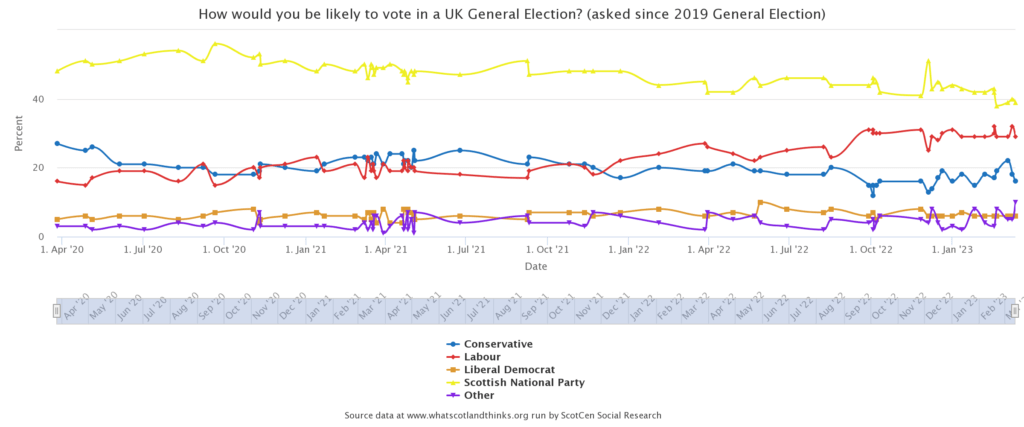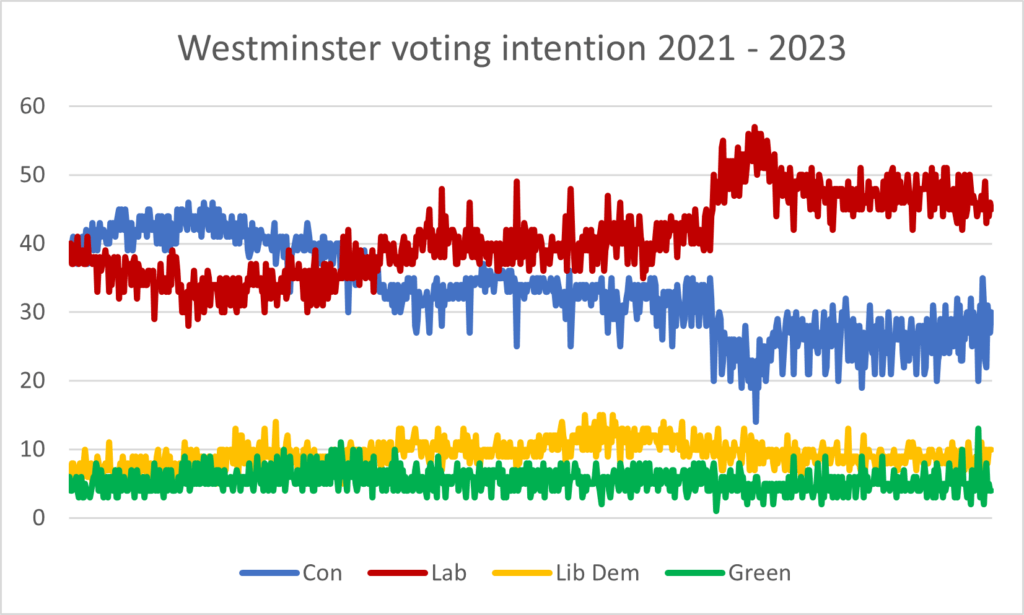Tracking the changing political landscape
OPINION polls in the UK tell a tale of two governments.
Both in their fourth term of office, both under fresh leadership, and both some distance from their main rivals.
But while the Tories find themselves someway behind across the UK, in Scotland the SNP enjoys a comfortable lead of around ten points in most polls; a quite remarkable feat after nearly 16 years in office.
The resilience of the party means that a teenager who becomes eligible to vote this May will have known nothing but SNP government since the day they were born.
After the extraordinary success of Alex Salmond and Nicola Sturgeon at the ballot box, this week’s election of Humza Yousaf as Scotland’s First Minister heralds a new era in Scottish politics.
The question now being asked by political observers is how long this SNP dominance will last?
Can the SNP maintain its commanding lead in the polls?

Over the past few months, polls have recorded a sharp fall in the proportion of respondents who believe the SNP Government is handling key public services well.
To date, however, that hasn’t been echoed when it comes to party voting intention.
Constitutional division still runs through the heart of Scottish politics, and backing a pro-independence party comes first for a sizeable number of voters – regardless of performance in office.
But Professor John Curtice, the UK foremost pollster, wrote in the i newspaper this week that Yousaf faces an immediate challenge of restoring the SNP’s “reputation for good government”.
“So far, [pro-independence] Yes supporters have remained loyal to the party despite the doubts some have about how well it is running Scotland now. However, Mr Yousaf would be unwise to assume that their loyalty knows no bounds,” he warned.
The new First Minister has had his share of challenging ministerial posts – transport, justice, and health.
Scotland now has the worst A&E waiting times on record, as Yousaf’s party rival Kate Forbes pointed out during the bitter leadership campaign.
So while many political observers expect the First Minister’s track record to negatively impact on overall support levels for the nationalist government, the question is to what extent?
The resurgent rivals
At the same time as the SNP faces up to the loss of Nicola Sturgeon from frontbench politics, so too it finds itself up against a resurgent Labour Party.
I write in more detail here in the i paper about why UK Labour leader Keir Starmer may be the real winner of the SNP’s bruising contest.
Scottish Labour leader Anas Sarwar has hauled his party back into second place, and most political observers predict somewhere between 10 and 20 gains from the SNP at next year’s UK General Election.
The stampede among prominent Labour activists to secure a seat in the central belt tells its own story.
To learn more about how the Labour Party operates, and how it formulates policy, get in touch with us to discover how it all works behind-the-scenes.
Can Rishi Sunak produce a miracle?

It is always sensible in British politics to never write the Conservatives off.
But trailing around 17 points behind Labour, and with bookies offering distant odds of 7/2 that Rishi Sunak will lead the largest party after the next election, a fifth term for the Tories would be one of the most remarkable turnarounds in modern history.
Privately, even elected politicians admit a stint in opposition would be no bad thing.
This is also occupying the minds of civil servants.
If you want to understand more about how Whitehall operates, my colleague Flavia Paterson – who was at the heart of government – has the insight you need.

About the author